10/26/09
The AntennasDirect
DB-8 8-Bay
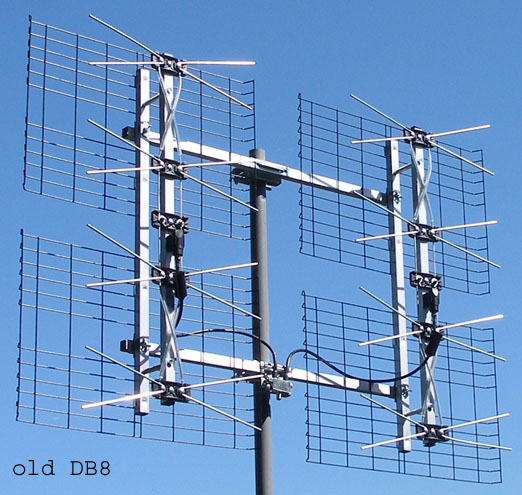
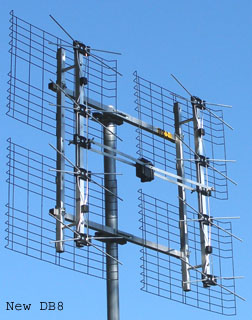
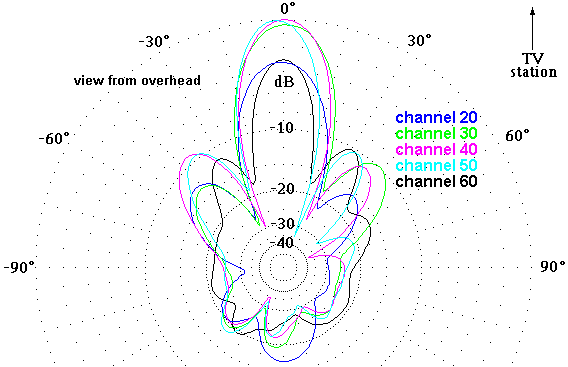
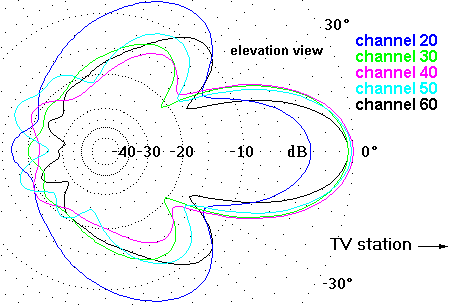
42.6” wide, 28.5” high, 5” deep
Antenna weight: 6 lb.
All the 8-bay makers seem
to be copying each other’s mistakes. The
DB-8 has some of the same harness errors as the 4228HD. Replacing the harness with two baluns and a
combiner would make it the same as the old DB-8. But the DB-8 is not fixable. The DB-8 dipole elements are only 6.2 inches
long, compared to 8.0 inches for the 4228.
This biases the DB-8 toward the higher channels. The DB-8 was always a bit weak below channel
40. Now that channels above 51 are gone,
it is no longer a reasonable antenna, even with the harness fixed. Some day AntennasDirect will figure out that
they have to rescale this antenna.
DB8 Net
Gain:
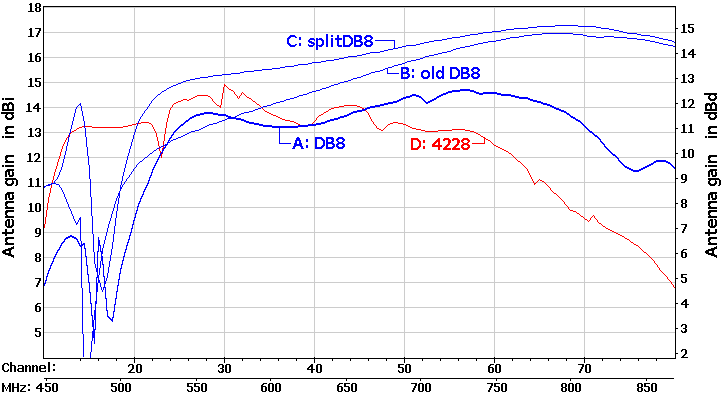
Plot
A is the new DB8. The harness and balun
are included in the simulation.
Plot
B is the old DB8, but excludes the losses in the combiner and baluns. The author has not measured these losses. Combiners often lose 1 or 2 dB at the highest
channels, and transformer balun losses are similar. So this plot overstates the gain of the old
DB8 by maybe 3 dB at the high end
Plot
C is the raw gain of the DB8 with the combiner and balun removed. The net gain would be close to this if the
combiner and balun were low loss devices.
The
simulations show a problem below channel 20 for the DB-2, DB-4, and DB-8. This is the result of a resonance in the vees
of each dipole. (The wire of each vee,
if straightened out, is 12.4 inches long.
This is a half-wave at 490 MHz, and results in a standing wave at this
frequency. In other words, each leg of
the vee has the opposite current from the other leg when the antenna is viewed
from the front. This results in much
radiation in the vertical direction, which saps the gain in the forward
direction.) These dipoles are simply too short.
The
right and left dipoles are set farther apart (by 3.4 inches) on the DB-8,
compared to the 4228. This results in
larger minor lobes in the azimuth (view from overhead) pattern, but it also narrows
the main lobe. As a result the DB-8 is
probably better at rejecting multi-path than the 4228. The major null is at about 25° for the DB-8, 30° for the 4228. The following table shows the beam widths
(measured to the half-power points):
ch
20: ch 30: ch 40: ch 50: ch 60: average:
DB-8 25.3° 23.2° 21.0° 19.0° 17.7° 21.2°
4228 32.2° 26.2° 25.7° 22.3° 19.4° 25.2°
DAT-75 44.3° 39.2° 34.8° 30.5° 26.6° 35.0°
AntennasDirect
calls the DB-2, DB-4, and DB-8 “Multi-directional antennas”. There is good justification for calling the
DB-2 and DB-4 multi-directional, but the DB-8 is one of the most directional
antennas you can buy. AntennasDirect is
simply flat wrong about this. You must
keep in mind that an 8-bay is very different from its kin.
High
gain antennas like this one are big, hard to aim, and hard to keep up in bad
weather. The author does not normally
recommend this antenna inside 25 miles.
But there are two exceptions to this:
1. A very high gain antenna might be necessary
behind a hill or in a valley.
2. When an obstruction is causing
multi-path, a very directional antenna such as this one can reject signal from
the wrong directions.
The DB8
balun
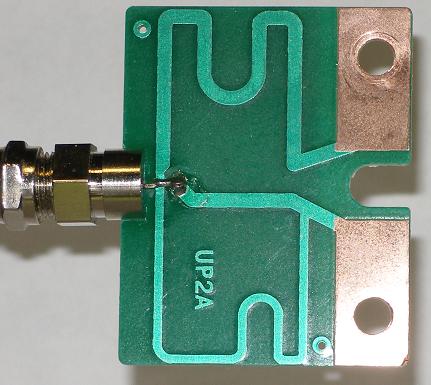
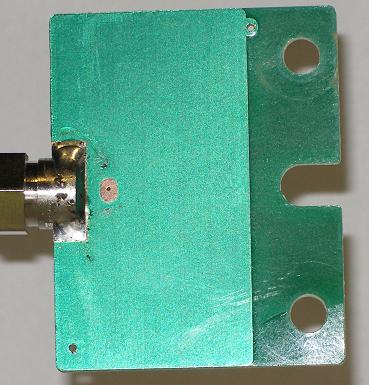
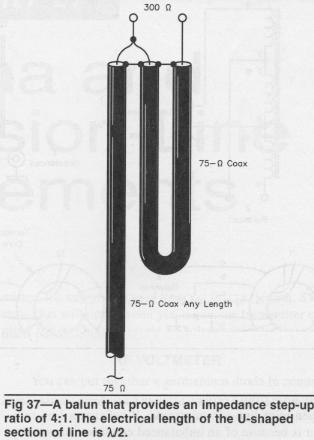
The diagram comes from the
ARRL Antenna Book. The DB8 balun is the
same except the U-section has been divided into two quarter-wave transformers
having characteristic impedances of 54 and 75 ohms, velocity factor 0.60. It will match 200 ohms with 75 ohms, making
it a 2.66:1 balun.
This balun is a good
impedance transformer but not a very good balun. A balun is supposed to block unbalanced
currents. This one creates them. Also it does not prevent radiation from the
coaxial shield. A balun of the 4228HD
general type would have been a little better.
This balun will mostly
filter out VHF, so don’t even think of buying this antenna for VHF.
This page is part of “An HDTV Primer”, which
starts at www.hdtvprimer.com